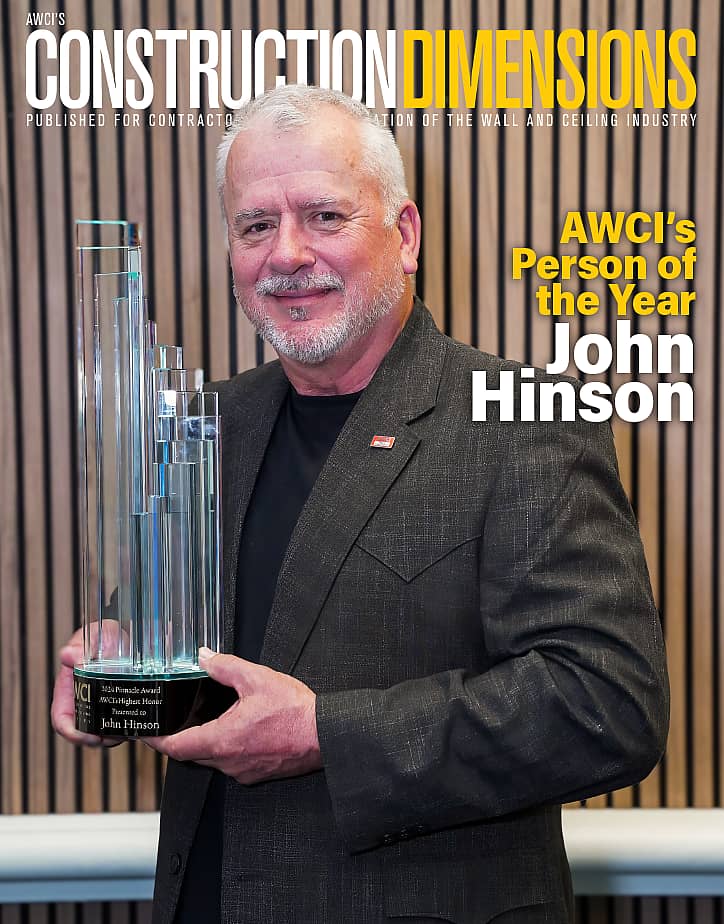Yes, there is a consensus belief among estimators that vacations, or even PTO in general, should be avoided like the plague—held with the same regard as a root canal sans Novocain. For most bidmeisters, the vacation fiasco starts with the preparatory phase in which the subject is coerced into vacating the office, usually just at a time when some ominous development is brewing. My boss’s declaration of an imminent software conversion during my absence clearly qualifies as a phase-one marker of this current debacle that I’ve been sharing in the past two installments.
Then comes the apprehension attending the extended silence of phase two. All work-related communication with the anxious estimator is withheld for the length of the vacation. Some type of calamity inevitably happens during this imposed silence, but the vacationing quantifier is kept in the dark for the duration.
Now, my devious phone call during my vacation to my friend, David, was a clear violation of the phase two protocol of silence. Even so, it yielded the knowledge of a predictable disaster: an estimate that I had worked on for nearly a week had been deleted! How could this be? It seems that the visiting techs who were facilitating the software conversion decided to use my estimate in my absence as a training example. In the process, the geeks managed to vaporize my work.
No matter. I was now forewarned and forearmed with knowing the nature of my challenges upon returning to the office. I was already hatching a preemptive strategy.
As luck would have it, the casino associated with my vanished estimate was only a stone’s throw down the road from where we were staying. My fiancé has a weakness for the slots, so a nonchalant suggestion that we should stop by there was snapped up in a heartbeat.
Once inside the gaming club, I slipped my girlfriend $100, then drifted off over to the high-stakes area where the renovation was to occur. Standing there gawking, the nature of the renovation came flooding back. I looked up, as 95% of the job consisted of ceiling and soffit replacement. Something else—the put-back was nearly identical, at least in configuration, to the existing, something that is peculiar to casinos where smoking is allowed, and where ceilings and soffits turn prematurely yellow due to the cigarette smoke. That explained the replacement of the ACT with a much higher end assembly. Then too, the drywall on the soffits carried a heavy trowel finish—a Southwestern flavored texture that was in vogue during the original construction but was now deemed too rough to accept the upgrade of Venetian plaster on the existing drops. The new work revealed itself in the existing as I recalled, and the replacement was to facilitate an upgrade to much higher-end finishes.
My plan was simple: Do a visual takeoff of the existing assemblies to be replaced, marry my purloined quantities with unit pricing that would match the numbers in my proposal, and voila! I would have a backup estimate that would eliminate the need to do another time-consuming takeoff upon arriving back at the office. Brilliant!
I borrowed a small scratch pad and pencil from a cashier who was eyeing me suspiciously. Nevertheless, I looked up and began my visual approximation. The work consisted of multiple levels of acoustical ceilings, delineated by several radius soffit drops, complete with light troughs, in addition to three large elliptical drywall ceilings. The ACT was the saving grace of my scheme, as the 2-by-2 dimension of each tile lent itself to an exact manual count for the square footage of assembly. Similarly, I was able to quantify the dimensions of the hard ceilings and soffits by counting the contiguous tiles. It was accurate, but painstaking work.
After staring upward for over an hour, I decided to take a break, as my neck was getting stiff. In fact, my collar muscles had locked up, and I was having great difficulty leveling my line of sight. That’s when I felt a tap on my back.
“Sir, you can’t take notes here. It’s against house rules,” came a gruff voice from behind.
I turned, but with my head still turned upward, I looked askance at a large and imposing security officer. I was intimidated but determined to finish my work. But in the end, the players at the blackjack tables were complaining, and I was ejected. No matter—I had my precious takeoff!
Arriving back at the office several days later, I was ready to take on the remedies for the phase three disasters. What my boss revealed left me dumbfounded.
“David was able to retrieve your casino bid, and I’m too involved to tutor you with the new program right now. Why don’t you take another couple of weeks off?”
I wrote this column from an obscure township in Panama with no Wi-Fi or cellphone service.
Vince Bailey is an estimator/project manager in the Phoenix area.




